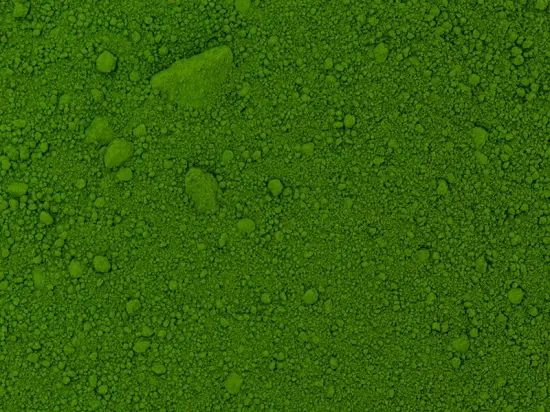
Selenastrum sp.
- Protein
- Lipids
- Amino Acids
On Demand weeks

Introduction: Selenastrum sp.
What is Selenastrum sp.?
Selenastrum is a genus of green algae belonging to the Chlorococcaceae family. The species in this genus are unicellular and colonial and are commonly found in freshwater environments such as ponds, lakes, and rivers.
Selenastrum sp. is a specific strain of the Selenastrum genus, and the "sp." in its name is used to indicate that the species is unspecified or unknown. The strain may exhibit certain traits or properties that are of interest to researchers or scientists, such as its ability to produce biofuels or its potential use in bioremediation processes.
Where does Selenastrum sp. grow?
Selenastrum sp. is common in freshwater environments such as ponds, lakes, and rivers worldwide. The genus Selenastrum is native to various regions of the world including North America, Europe, Asia, Africa and Australia.
The specific species or strain of Selenastrum sp. can occur in different regions and varies depending on local environmental conditions such as temperature, light intensity and nutrient availability.
What does Selenastrum sp. look like?
Selenastrum sp. is a green alga that is typically unicellular or colonial, meaning it can exist as a single cell or as a group of cells. The cells are small and usually spherical or ovoid in shape and about 10 to 20 microns in size.
Selenastrum sp. appears under a microscope. green, due to the presence of chlorophyll, the pigment responsible for photosynthesis in plants and algae. The cells may also have one or more flagella, which are whip-like structures used for movement.
When Selenastrum sp. exists in colonial form, the cells are arranged in a flat, disk-like shape, with each cell connected to the others by thin, thread-like structures called slimy strands. Colonies can vary in size from a few cells to several hundred cells, depending on the specific strain or species.
Is Selenastrum sp. a protist?
Yes, Selenastrum sp. is a kind of protist. Specifically, the freshwater alga belongs to the Kingdom Protista, a diverse group of eukaryotic organisms that do not fit into the animal, plant, or fungal categories.
Selenastrum sp. is a unicellular or colonial green alga, which means it is photosynthetic and contains chloroplasts, similar to plants. However, the alga is more likely to be classified as a protist because it lacks the specialized structures and tissues that define the plant kingdom, such as roots, stems, and leaves.
What is Selenastrum sp. used for?
Selenastrum sp. has a variety of uses, including in dietary supplements. Selenastrum sp. is rich in vitamins, minerals and other nutrients that can support overall health and well-being. It is available in capsule, tablet, and powder form that can be added to smoothies or other foods and beverages.
Also in skin care products, Selenastrum sp. has antioxidant and anti-inflammatory properties that can help protect skin from damage and reduce the signs of aging. It is used in various cosmetic and skin care products such as moisturizers, face masks and serums.
The bioremediation states that some strains of Selenastrum sp. proven effective in removing pollutants and toxins from contaminated water sources. This makes it a potential tool for bioremediation of water pollution[4].
Selenastrum sp. is used as a model organism to study photosynthesis, cell biology and the ecology of freshwater environments and is thus an important part in and for scientific research. Also in experiments such as studying the effects of environmental stressors from pollution, temperature changes and nutrient availability on aquatic ecosystems, the freshwater alga Selenastrum sp. deployed.
What are the benefits of Selenastrum sp.?
Selenastrum sp. has several potential benefits, primarily for health, due to its rich nutrient profile, the vitamins, minerals, antioxidants and other nutrients essential to a healthy diet. It also contains essential amino acids and omega-3 fatty acids.
Selenastrum sp. contains compounds that may boost the immune system and reduce the risk of illness and infection, as well as fiber, which may help regulate digestion and reduce constipation.
In addition, Selenastrum sp. help reduce blood cholesterol and reduce the risk of cardiovascular disease. Selenastrum sp. benefit. The antioxidants contained help keep the skin in a healthy condition and also reduce the appearance of wrinkles and fine lines.
Some strains of Selenastrum sp. have shown that they can be used for the bioremediation of polluted water can. However, it is important to note that more research is needed to confirm and clarify these potential benefits. In addition, the effectiveness of Selenastrum sp. depend on various factors such as the type of strain, the dosage and the way of application.
Typical applications: Selenastrum sp.
Typical applications
Selenastrum sp. is a microalga in the green algae group. Its crescent or sickle-shaped appearance is particularly noticeable.
Selenastrum sp. is used in aquaculture as fish food. A less commercial but still interesting use of Selenastrum sp. is, its role as an indicator of the cleanliness of lakes and rivers. Being particularly sensitive to toxins and contaminants, Selenastrum sp. microalgae is a good gauge of water cleanliness[4].
Due to its content of protein, lipids as well as amino acids, Selenastrum sp. microalgae is a good supplement for aquaculture animal feed.
This product is available in the form of Selenastrum sp. powder.
Sources:
- Selenastrum - M.D. Guiry in Guiry, M.D. & Guiry, G.M. 22 November 2021. AlgaeBase. World-wide electronic publication, National University of Ireland, Galway. (https://www.algaebase.org/search/genus/detail/?genus_id=43450)
- Selenastrum - Wikipedia (https://en.wikipedia.org/wiki/Selenastrum)
- Wang P, Luo L, Ke L, Luan T, Tam NF. Combined toxicity of polycyclic aromatic hydrocarbons and heavy metals to biochemical and antioxidant responses of free and immobilized Selenastrum capricornutum. Environ Toxicol Chem. 2013 Mar;32(3):673-83. doi: 10.1002/etc.2090. PMID: 23225536. (https://pubmed.ncbi.nlm.nih.gov/23225536/)
- Ra JS, Kim HK, Chang NI, Kim SD. Whole effluent toxicity (WET) tests on wastewater treatment plants with Daphnia magna and Selenastrum capricornutum. Environ Monit Assess. 2007 Jun;129(1-3):107-13. doi: 10.1007/s10661-006-9431-2. Epub 2006 Nov 15. PMID: 17106776. (https://pubmed.ncbi.nlm.nih.gov/17106776/)

ALGANEX certificate system
Reply within twelve hours